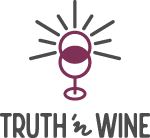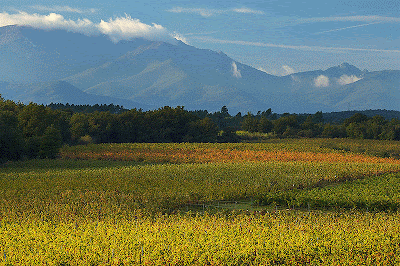It seems everyone is in a panic this week in response to
Morgan Stanley Research’s report that a global shortage of wine was coming.
“Data suggests there may be insufficient supply to meet demand in coming years,
as current vintages are released,” says the report, according to various news
sources.
Morgan Stanley Research’s report that a global shortage of wine was coming.
“Data suggests there may be insufficient supply to meet demand in coming years,
as current vintages are released,” says the report, according to various news
sources.
With the bleak outlook for France’s 2013 harvest fresh in
their minds, I was just picturing the hordes of wine aficionados running to the
store to stock up their private cellars.
their minds, I was just picturing the hordes of wine aficionados running to the
store to stock up their private cellars.
Many wine industry experts are dismissing this report,
citing such facts as California’s record-breaking 2013 harvest and the
stabilization of global wine consumption – it seems that while French citizenry’s
yearly consumption has fallen sharply in the last decade, us thirsty Americans,
and the Chinese, are picking up the slack.
citing such facts as California’s record-breaking 2013 harvest and the
stabilization of global wine consumption – it seems that while French citizenry’s
yearly consumption has fallen sharply in the last decade, us thirsty Americans,
and the Chinese, are picking up the slack.
You can throw statistics at the wine market and believe what
you want … which is usually how these things work. You never really can predict
how things will turn out, as weather and the economy can be so fickle.
you want … which is usually how these things work. You never really can predict
how things will turn out, as weather and the economy can be so fickle.
I personally am choosing to believe that there has never
been a better time to drink interesting, quality wines and there will always be
wine for those who look for it.
been a better time to drink interesting, quality wines and there will always be
wine for those who look for it.
Last week, in a French Wine Society (www.frenchwinesociety.org/) master
class on the wines of southern France, I learned a bit more about what’s going on
to contribute to the fears about a wine shortage.
class on the wines of southern France, I learned a bit more about what’s going on
to contribute to the fears about a wine shortage.
Back in the late 1980s, a “Vine Pull Initiative” was
introduced by the European Union specifically to reduce vine acreage in
southern France and Italy, where a lot of table (and mediocre) wines were being
produced. Subsidies were paid to winegrowers to “grub up,” or pull out, their
vines. Economic pressures were severe enough by 2000 that many vineyard owners
had a hard time making ends meet, as domestic demand decreased, and export
prices fell. Many vineyard owners – families
who have grown in the same spots for centuries – opted to take the subsidy and
in many cases replanted their acres with other crops, such as sunflowers,
cereals, or olive trees.
introduced by the European Union specifically to reduce vine acreage in
southern France and Italy, where a lot of table (and mediocre) wines were being
produced. Subsidies were paid to winegrowers to “grub up,” or pull out, their
vines. Economic pressures were severe enough by 2000 that many vineyard owners
had a hard time making ends meet, as domestic demand decreased, and export
prices fell. Many vineyard owners – families
who have grown in the same spots for centuries – opted to take the subsidy and
in many cases replanted their acres with other crops, such as sunflowers,
cereals, or olive trees.
But as old vines were pulled, in many cases they were
replaced with better-quality grapes, which were much more suited to the
geologically rich soils and climatic conditions prevalent there.
replaced with better-quality grapes, which were much more suited to the
geologically rich soils and climatic conditions prevalent there.
As a result, the Languedoc-Roussillon has become one of
those areas of the world where quality wines are on the rise (reminding me of
the Paso Robles and Santa Ynez communities in California). Championed by
adventurous vintners with a strong sense of “terroir” – rooted in the soil, and
nurtured by the sun and strong winds – their wines are modern yet also grounded
in the deep history and sense of community that is prevalent in the area. In
fact, a majority of vineyard owners process their grapes at coops, which allow
them to share the cost and labor of wine production and marketing, furthering
the social bonds. And, the region boasts the highest number of certified organic
wine producers in France.
those areas of the world where quality wines are on the rise (reminding me of
the Paso Robles and Santa Ynez communities in California). Championed by
adventurous vintners with a strong sense of “terroir” – rooted in the soil, and
nurtured by the sun and strong winds – their wines are modern yet also grounded
in the deep history and sense of community that is prevalent in the area. In
fact, a majority of vineyard owners process their grapes at coops, which allow
them to share the cost and labor of wine production and marketing, furthering
the social bonds. And, the region boasts the highest number of certified organic
wine producers in France.
I tasted 52 wines different wines over two days from the
Languedoc-Roussillon, ranging in price from $8 to $30, some of which were
organic or biodynamic. I particularly liked the Chateau de Lancyre Rosé, the Mas de Daumas
Gassac Blanc, and the Domaine la Tour Vielle Rimage (the latter is sold at the
wine House, www.winehoue.com, in West Los
Angeles for about $20). Not all 52 them knocked my socks off, but I was
impressed by the overall quality and was captivated by the stories behind each
wine. It was like being in the south of France for those two days.
Languedoc-Roussillon, ranging in price from $8 to $30, some of which were
organic or biodynamic. I particularly liked the Chateau de Lancyre Rosé, the Mas de Daumas
Gassac Blanc, and the Domaine la Tour Vielle Rimage (the latter is sold at the
wine House, www.winehoue.com, in West Los
Angeles for about $20). Not all 52 them knocked my socks off, but I was
impressed by the overall quality and was captivated by the stories behind each
wine. It was like being in the south of France for those two days.
Unfortunately, most wine stores don’t stock many wines from
the Languedoc-Roussillon so shop around and browse online for deals. You might
find a gem.
the Languedoc-Roussillon so shop around and browse online for deals. You might
find a gem.
Until next time, à
votre santé !
votre santé !

